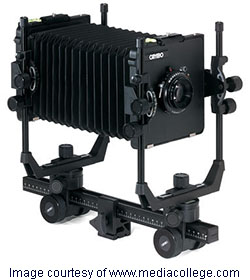Large Format Photography


Large format photography is one of the most fascinating aspects of the photography hobby, and one that has been used by some of the world’s most famous photographic artists. From Ansel Adams and Christopher Burkett to Richard Misrach and Nicholas Nixon, artists have been using these large format photographs to tell their stories for many years.
The term large format includes large films, large cameras and processes that are at least 4” x 5” in size. While the most common large format sizes are 4” x 5” and 8” x 10”, large format photography also encompasses 5” x 7”, 11” x 14”, 16” x 20” and larger prints. Large format photographs are often seen in panoramic displays as well, and the results can be quite striking.
Photographers shooting in large format will typically use a special camera on which both the front and back can be easily adjusted. These front and back adjustments allow the photographer to finely control both perspective and depth of field – important considerations for large scale photographs.
Large scale cameras are used in a variety of fields, including architecture, portraiture and landscape photography. The fine control afforded by the movable front and back of large format cameras provide excellent focusing ability, and the fact that these cameras can easily be tilted up and down and left and right make it easier to capture the landscape, building or person being photographed.
Those who want to understand the power of large format photography would do well to study the photographs of Ansel Adams. This world famous photographer is responsible for some of the most loved photographs the world has ever seen, and many of them were shot with a large format camera. These photos in particular demonstrate how the front and rear adjustments are able to create significant depth of field and fascinating results.
In many ways operating a large format camera is similar to working any type of camera, but there are some important differences to be aware of as well. Perhaps most importantly, the film to be loaded will require extra care and a dark space in which to load and unload. Professional photographers will generally use either a darkroom or a special changing bag when no darkroom is available. Shooting in the field can therefore be a complicated matter, although there are some prepackaged 4” x 5” films on the market these days.
Of course these days the world of film is quickly being usurped by the digital revolution, and large format photography is no exception. These days a number of digital camera backs are available to fit large format cameras. In some cases these are medium format backs which have been adapted to fit large format cameras. In these cases the resulting images will be cropped. In other cases special scanning backs are used, eliminating the cropping. These scanning backs scan the image area much like a traditional flatbed scanner. The downside of this technology is that it can take some time to scan the entire image area, and photographers may need to experiment a bit to get the best shots.
Successful large format photography generally requires the use of a tripod as well, although some large format cameras are designed to be handheld models. Those who plan to shoot in large format should seriously consider investing in a quality tripod even if the camera can be used without one.
Large format photography has found its way into a variety of places, and this unique photographic style has found many uses. Some of the most commonly seen large format photographs are fine art photos, landscape photographs and of course advertising copy. Scientists also make use of large format photographs, using their large size and magnification to more carefully study everything from disease processes to cell mechanics.
The sheer size of large format photographs can stop passersby in their tracks, and some of the most memorable photos in history have been created using these techniques. From the walls of the finest museums and galleries to the streets of our cities, these beautiful works of art are making their mark, making large format photography one of the most unique parts of the world of photography.